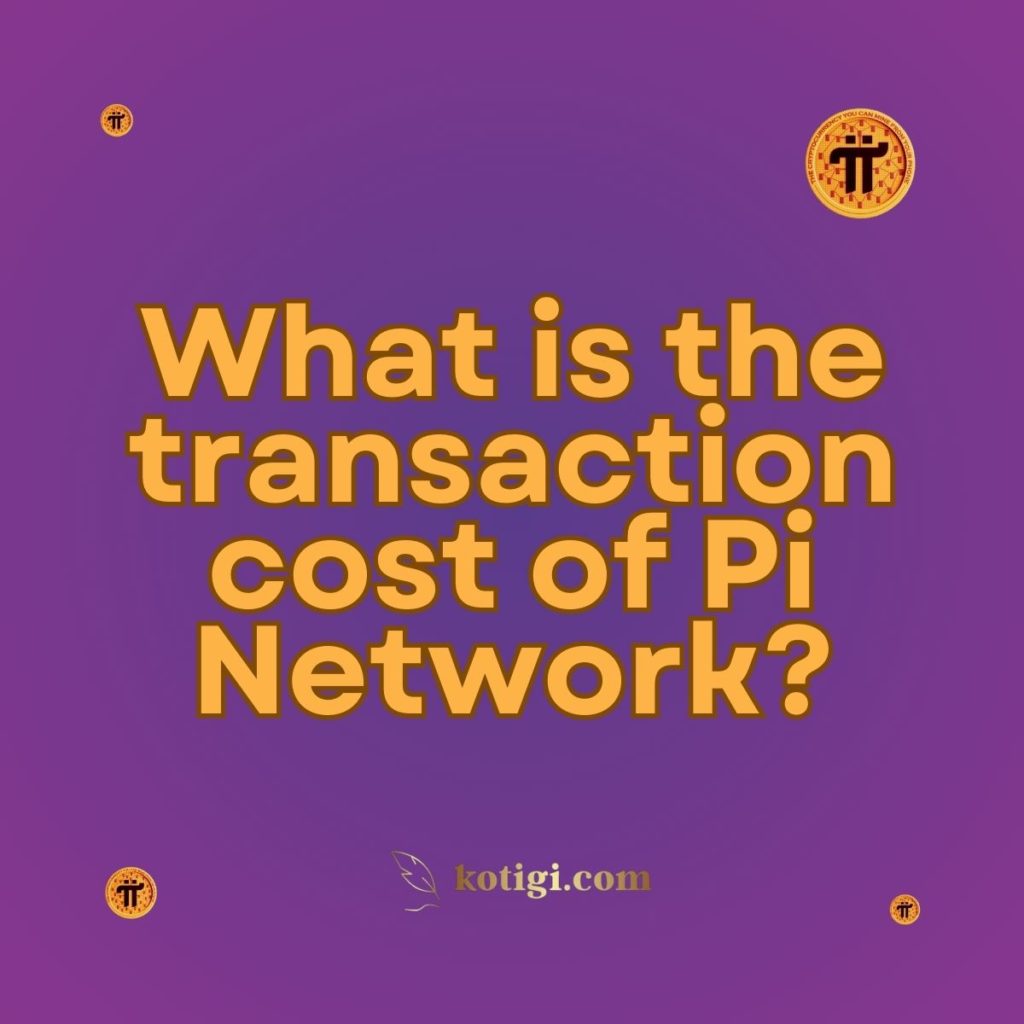
What is the transaction cost of Pi Network?
The transaction cost on the Pi Network is extremely low (Near-zero), almost negligible, due to its use of the Stellar Consensus Protocol (SCP). This makes it ideal for everyday transactions and microtransactions, offering a cost-efficient solution compared to other major cryptocurrencies.
Introduction
The Pi Network has garnered significant attention for its innovative approach to mobile mining and its goal of creating an inclusive cryptocurrency ecosystem. A critical factor in the Pi Network’s success is its extremely low transaction costs, which are almost negligible compared to traditional cryptocurrencies. This affordability stems from the Stellar Consensus Protocol (SCP) that Pi Network employs, enabling fast and low-cost transactions for users. Understanding the transaction cost on Pi Network provides insights into its potential to drive global adoption and usage, especially in emerging markets and for everyday payments.
Table: Comparison of Transaction Costs Across Cryptocurrencies
| Cryptocurrency | Average Transaction Fee (USD) | Consensus Mechanism | Best Use Cases |
|---|---|---|---|
| Pi Network | Near-zero | Stellar Consensus Protocol (SCP) | Microtransactions, daily payments, remittances |
| Bitcoin | $1 – $20+ | Proof of Work (PoW) | High-value transfers, long-term store of value |
| Ethereum | $0.50 – $100+ (variable gas fees) | Proof of Stake (PoS) | Smart contracts, DeFi, NFTs |
| Stellar | $0.00001 | Stellar Consensus Protocol (SCP) | Cross-border payments, remittances |
| Litecoin | $0.01 – $0.10 | Proof of Work (PoW) | Peer-to-peer payments, faster transactions than Bitcoin |
Analysis
The table above highlights the stark difference between Pi Network’s negligible transaction fees and those of more established cryptocurrencies like Bitcoin and Ethereum. Pi’s low transaction costs, combined with the scalability offered by SCP, make it a strong candidate for widespread adoption, particularly in regions where transaction fees can be a barrier to financial inclusion. Bitcoin’s high fees limit its everyday use, while Ethereum’s variable gas fees make it unpredictable for regular transactions. Pi’s advantage in low-cost transactions positions it as a practical and accessible alternative for users seeking a low-fee cryptocurrency experience.
Stellar Consensus Protocol (SCP) and Its Impact on Transaction Costs
SCP: The Core of Pi Network’s Low Fees
At the heart of Pi Network’s low transaction fees is the Stellar Consensus Protocol (SCP). Unlike blockchain systems that rely on energy-intensive proof-of-work (PoW) mechanisms, SCP operates with a lightweight consensus model. This design dramatically reduces the amount of energy and resources needed to process transactions, keeping transaction fees minimal.
Direct Cost Benefits for Users
One of the immediate benefits to Pi Network users is the ability to perform transactions at a fraction of the cost incurred on networks like Ethereum or Bitcoin, where fees can spike significantly due to network congestion. On Pi Network, transactions remain consistently low, regardless of network traffic.
SCP’s Role in Scalability and Efficiency
The use of SCP also allows Pi Network to scale more efficiently as its user base grows. Even with higher transaction volumes, the network maintains its low fees, ensuring that it remains accessible for a wide range of use cases, from microtransactions to larger payments.
Comparison with Other Cryptocurrencies
Pi Network vs. Bitcoin and Ethereum
Compared to Bitcoin and Ethereum, which often suffer from high transaction fees during peak usage, Pi Network stands out for its low-cost transactions. On Bitcoin, fees can exceed $10 during times of high demand, and Ethereum’s gas fees can vary greatly, sometimes reaching even higher. In contrast, Pi Network’s fees are almost negligible, which gives it a competitive edge for frequent, everyday transactions.
Benefits for Small Transactions
Because of these low fees, Pi Network is particularly well-suited for small transactions, such as tipping or purchasing low-cost items. This opens up new use cases for cryptocurrency in day-to-day activities, where high fees from other networks might discourage users from engaging in smaller payments.
Merchant Integration and Transaction Fees
Attracting Merchants with Low Costs
For merchants, one of the key considerations when adopting a cryptocurrency is the cost of transactions. Pi Network’s negligible fees make it an appealing choice for businesses, especially small and medium-sized enterprises that want to reduce overhead costs. The low transaction fees ensure that merchants keep more of their earnings, which can encourage more widespread acceptance of Pi as a payment method.
Streamlining Payments for E-Commerce
In e-commerce, transaction fees can quickly add up, especially for small transactions. By using Pi Network, merchants can offer a cheaper alternative for customers, potentially increasing their competitiveness in the market.
Microtransactions and Financial Inclusion
Facilitating Microtransactions
With its extremely low transaction fees, Pi Network enables microtransactions, a feature that is crucial for applications like gaming, tipping, and small online purchases. Traditional cryptocurrencies struggle in this area due to their high transaction costs, making Pi a more viable option for this growing segment.
Supporting Financial Inclusion
Pi Network’s low transaction fees make it accessible to users in emerging markets where high costs associated with financial services can be prohibitive. The network’s minimal fees allow for the inclusion of users who might otherwise be excluded from traditional financial systems due to high transaction or banking fees.
The Future of Pi Network’s Transaction Costs
Ensuring Long-Term Fee Stability
As Pi Network continues to grow, maintaining low transaction fees will be key to its success. The network’s reliance on SCP positions it well to keep fees low, even as more users join the platform. This stability in fees will be critical for ensuring the network’s long-term growth and widespread adoption.
Promoting Broader Use Cases
Low transaction costs are essential for encouraging new use cases for Pi Network, including its use in peer-to-peer transactions, retail, and global remittances. As more businesses and individuals recognize the value of Pi’s negligible fees, its utility and adoption will continue to expand.
Conclusion
The Pi Network offers a highly attractive proposition with its minimal transaction costs, thanks to the efficiency of the Stellar Consensus Protocol. Whether for microtransactions, merchant payments, or international transfers, the low fees make Pi a practical and accessible option for users worldwide. As the network expands, these cost advantages will play a pivotal role in driving broader adoption and utility.
Key Takeaways:
- Pi Network uses the Stellar Consensus Protocol (SCP) to maintain minimal transaction costs.
- Its low fees make it suitable for microtransactions and small payments.
- The negligible transaction fees attract merchants looking to reduce overhead costs.
- Pi Network’s cost structure is well-positioned to support financial inclusion and broader adoption.
- Low and stable transaction costs will be key to Pi Network’s future growth.





